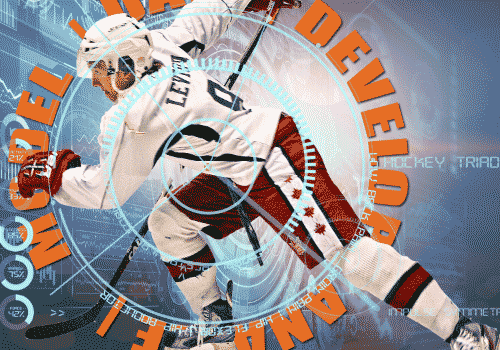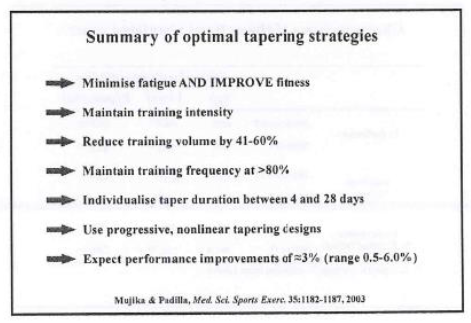
- The value of motor control is well appreciated but we really don’t know that much and I think our frameworks might be a bit blurry.
- We are data hungry and we love to show numbers but what numbers are important – we also need to think about the long term (You’ll see a common theme)
- Tissue quality matters and is linked to the movement system and long term adaptation
- Need to think about development and appreciate how micro-elements influence marco-development or long term athletic development
- Professional sports is sexy but the real foundation exists in development and there is a lot of work to be done here.
- Can abnormal tissue tension be resolved with neutrality / centration?
- We need to avoid the middle for expression development. Middle is good for recovery and regeneration. We need neuro-adaptions.
- Eccentrics and the stretch shortening cycle. We always need to do develop this.
Recovery
Impulse Development
Accelerations
Jump Impulse Development
Trunk Development
Principles of training:
Qualities:
Define the timeline
Program themes based on level
Program exercises and loading parameters – progression
- Template loading parameters for (review thoughts from Boston)
- Speed
- Speed Strength
- Strength Speed
- Max Strength
- General Strength
Add appropriate homework
BOO (Final )
Appreciate and understand principles of Training theory
Favorite tool is eccentric – jumps and medicine ball – graph for return to play
Tension is the a strength development agent – squat jump vs. squat…squat jump has higher levels of tension
Specifically target eccentric load – javelin story placed in aggravating position and then train that position eccentrically
“more degrees than a thermometer”
Don’t stretch a strained tissue
Nothing challenges the hamstring more than straight leg bound
If they lose the ability to control neutral spine by 1% they can lose 1’
Purely aerobic work – destructive to speed/power capabilities
New borns are 100% fast twitch – really??
Confused with the volumes prescribed in the collegiate program vs. the aerobic comment during rehab
Metabolic load perceived harder than as neurological development but they are different
Change your rehab emphasis every 3 days – 3:1. Theme the approach, then adjust
The greater the variety the better the adaptation = better performance = better injury prevention
Proprioception
Practice that doesn’t look good can be highly effective (squat then jump)??
A crappy practice is sometimes an effective practice???
Multiple muscles systems
Understand the effects of instability on gait – #1 goals is self-preservation
- Stiffening strategy – if they are instability
- Grounding strategy
- Multi-link shifting
IM
Tn = time need to get back to initial levels, Tg = time to peak adaptation
Negative Influence (fatigue accumulation) is responsible for improved performance, because the positive adaptations have already been developed.
TH:
- Reduce training volume 41-60%, but intensity needs to stay high, and frequency remains same in highly trained subject. Duration is 2 weeks (linear taped, exponential taper (slow & fast)
- No effect by female or male
- Event duration and metabolic contribution DO NOT affect the potential gain that can be obtained during the taper
- Technical and biomechanical aspects of competition
Need to make sure you match diet during taper – amount not content

Hansen
We are always better to underestimate – you still super-compensate with less chance of injury
Cyclical realities
- Hated the word push – hit
High 35 – Low 65
Fastest Cheetah – takes 30minutes to recover from kill and upto 3 days to hunt again
Readiness is tied to sports medicine
- CNS: 3% of bd.wt and 30% of caloric burn
- Endocrine:
- Heart
Data is not an outcome
- Compliance
- Collection
- Interpretation / analysis
- Reintegration / education
- Action
“Train by attrition” – if other countries tried like the US they would not have national teams
FT / PT a sports scientist goes over the training loads
Resilience is tied to how rested you are
Measure CNS
We feel first then think.
- If we feel overwhelmed we will behave overwhelmed
We are wired for survival not happiness
Boo
Intuition must be rooted in fact based-experience
Evaluation of intensity – we are always aiming to increase intensity (single most important variable)
- How to progress in speed
- Suppose how would you evaluate plyometrics – sometimes it’s subjective (Eccentric load)
- Waste a ton time building volume – start day one – must be able to get to a level
- Warm-ups are not extensive enough – complexity and challenging coordination (balance, coordination, agility, movement skill to build a base)
- Warm-up is about movement – not about foam rollers
- Elite level athletes take 40 minutes
- Throwing the seeds of skill on concrete
- Neural training Agents – review this (it’s awesome)
- General Training – supplies the support system of the neural agents
- General strength is body weight
- Training
- Program a day based on a theme – neural or general
- Never mix and match
- How clear is the message: clear cellular messages to get the adaptation you want
- Like ice cream, like beer – but they don’t go well together
- Beware of grouping by convenience vs. training adaptation you want
- You can have inside and outside training
- Shades of gray
- The balance between neural / general
- Base 50/50, 60/40, 40/60
- Time, training age, genetic talent
- Better athletes produce both greater external and internal forces – Ferrari vs. civic – elite athletes drive at 90
- Spacing for elite athletes need to be greater
- Elite 2 -3 days per week, development 3 – 4 athletes
- Or genetic ceiling effect – diminishing ROI – levels off
- Application of Training Load
- 3-1 Model (3 Hard 1 easy)
- Change between mesocycles slightly but make sure you change them – continually evolve, you can come back (periodic shift)
- Forward and reverse progressions (know which quality works better going forward or reverse (skill, elasticity, plyometric, fine motor qualities – detraining effect of soft tissues)
- Body Balance = the balance between qualities
- “Pick-up the house but can’t play”
- Strength of the peripheral vs. the core, leg vs. arm
- Avoid the work-around – because it will comeback and bite you in the butt – decathalete story can’t land in LJ and uncomfortable in block starts – related to squat
- “Skip”, sprint, create impulse – too many people can’t
- Balance biomotor development
- Power/ absolute strength / elastic development (AWESOME!!!) – “better making small gains across the board than big gains in one quality”
- Bench Press / clean 1:1
- Clean / Deep Squat 1:1.5
- Cost / Benefits Analysis (squat how strong do you need to be)
- Train eccentrically distally, concentrically proximally – the more connective tissue there is in the body part = elasticity / eccentrically – doesn’t like calf raises because it forces it to act concentrically – it does more harm then good.
- Prioritized Speed
- Speed all the time – give them an opportunity to express speed in practice (16 x 40 sprints – allow it remain safe, keep it short.
- Speed is a part of being in shape…it has a lot of injury prevention built in, especially for endurance athletes
- Capacity before power
- The principle of intermittent work – get training volumes
- Sequence (short to long)
- Acceleration work – 30
- Absolute speed development – 60
- Speed endurance and maintenance (when applicable) – 120
- Rationale
- Safety
- Power output timeframes
- Lactate production – stuns the nervous systems, makes skill acquisition more difficult
- PHASE 1: Power First
- #1 reason is the functionality of the nervous system – rate coding improves, motor synchronization
- 50 – 60%
- Power development
- Prepare to train absolute strength and RFD
- Bodybuilding circuits as endocrine support from the rigors of work – 2- 3 times per work
- 24 total sets of 10 reps 60 – 90 seconds – enhance serum testosterone, GH
- “Feel” the 10
- PHASE 2: Absolute Strength and RFD
- Sweet and simple
- PHASE 3: Ballistics
- Switch to jump squats – high tension levels
- Squat erosion tests: tests to
- Never give %
- Agility and COD
- Components
- Plyometrics is COD the body doesn’t know direction
- One of the worst things you can do is SPORT SPECIFIC from an injury perspective
- General is restorative
- Read body language vs. blood draws
- Sometimes technology can be crippling
- Be aware of the “middle zones” -> overtraining
- It means to go away
- Too easy for adaptation, too hard to recover
- Love to do power first vs. strength first because you are able to develop more absolute strength faster when power happens first
- Sequence (short to long)
- Time, training age, genetic talent
- Base 50/50, 60/40, 40/60
- Program a day based on a theme – neural or general
Squats interferes with prioprioception
Questions:
How do you evaluate speed and plyometric intensity and do you have a paradaigm / relationship framework with strength
SCAP
Tendinopathy
LT optimization – impact of structural changes
FAI
Structural changes
Performance optimization proportional to volume – FAI
Improve tissue quality to impact Neuromotor-sensory integration (tape, FAT-tool, activation, PNF, ART….)
Trx:
Warm-up
Assess look and address abnormal tension
High speed
Make adjustments
** evaluate right after the event then make adjustments
Abnormal tension that can impair optimal function – elite athletes can adapt better to abnormal tissue tension. Hamstring
- Regional
- Antagonist – muscle coordination in the system, tension in agonist
- Global – complex matrix network
Improve joint function
Improve abnormal tension
Improve mechanism
Good: improve efficiency and improve
Bad: improve coordination
Facsial system controls motor coordination
Micro-trauma without symptomology will change motor control
“Sometimes more important to treat the brain than the injury”
“CORE” and the motor control of the CORE is critical often mis-evaluated and mis-trained
Need to touch the body to see what is going on
Differential Diagnosis vs. Functional Diagnosis vs. Causative Diagnosis – find the cause more important than the site (Tear – PRP – not address the cause)
“The way the people move is a gateway to assess the nervous system”
Fascial tension follows lines of force not muscle line
“Exercise a joint without ideal movement pattern is the worse thing you can do”
Neil – overextended athlete
BOWL analogy
Diaphragm over-extended when not able to DOME
Egg Position
The nature’s platform – Johnathan Nesbit
Axial neutrality is a pre-requisite appendicular activity
